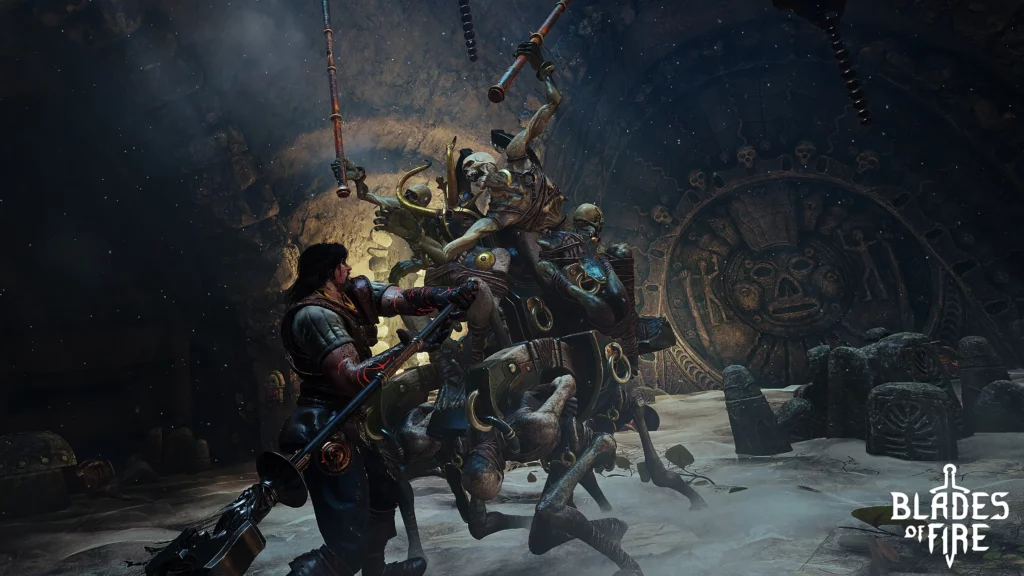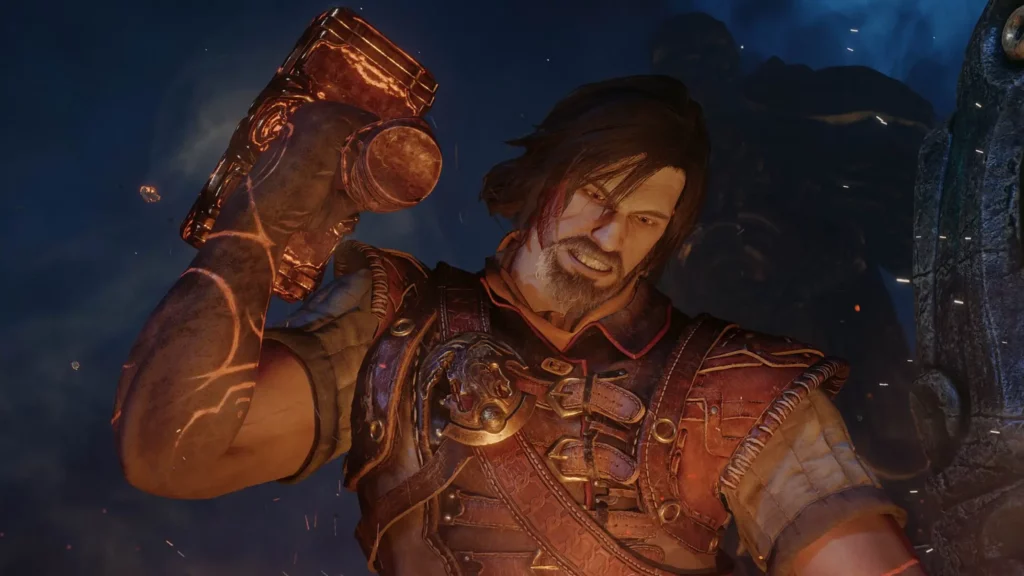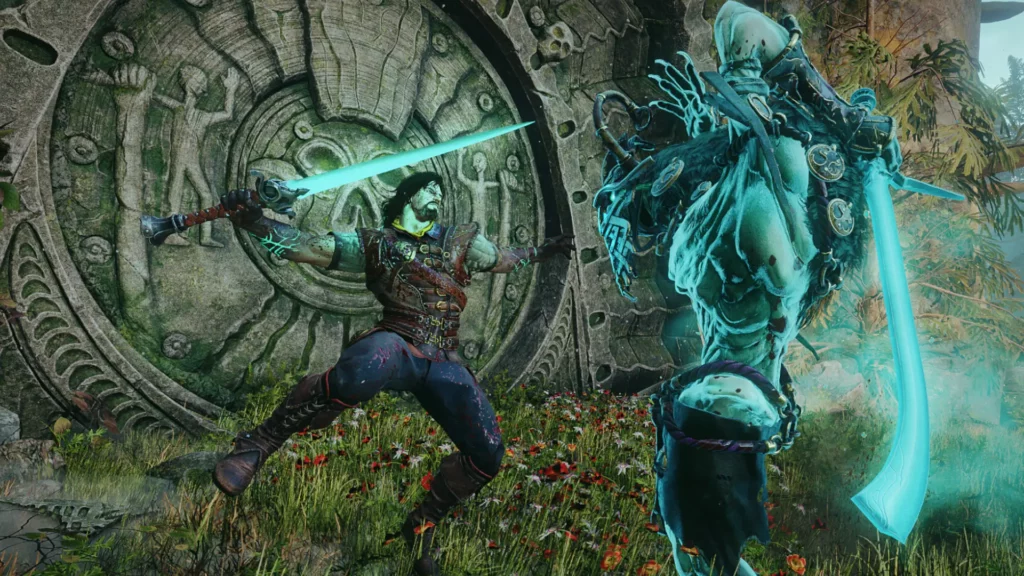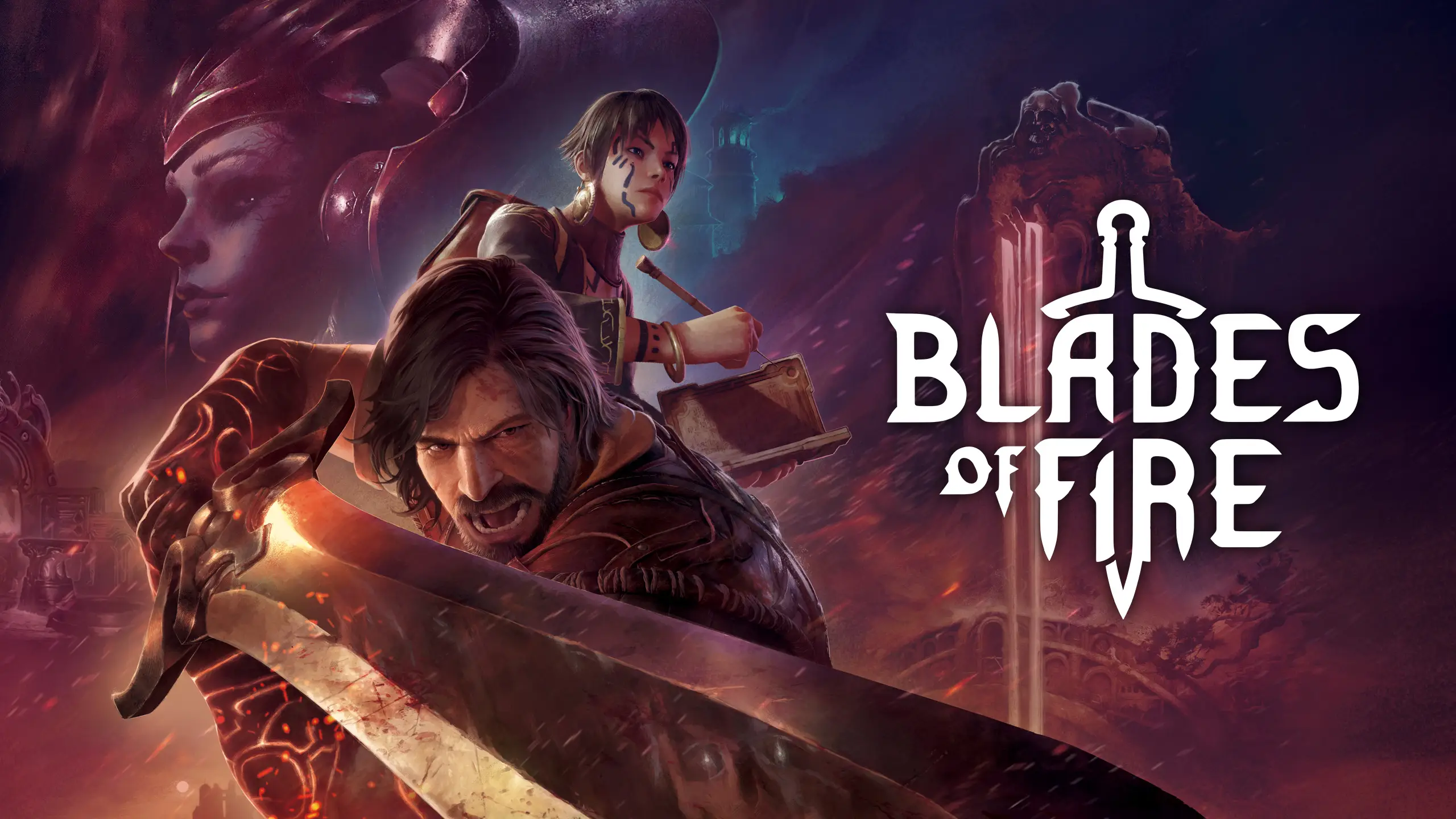In Blades of Fire, players assume the role of Aran, an ordinary commoner who discovers a mystical forging hammer that propels him into a grand quest to defeat a queen leading her kingdom to ruin. MercurySteam, known for crafting tightly paced action games, attempts to blend its action expertise with RPG elements in this title. The game rests on three foundational elements: a rewarding weapon-crafting system, a straightforward combat system, and a narrative that struggles to resonate emotionally. While these components sustain engagement through the roughly 55-hour campaign, the experience is marred by an unsatisfying story conclusion and a tedious post-game scavenger hunt required to unlock the “true” ending, which dampens enthusiasm by the journey’s end.
The premise of controlling a blacksmith who forges his own weapons is intriguing, promising a fresh take on the action-RPG genre. Aran’s journey is filled with opportunities to craft powerful tools of destruction, battle diverse enemies, and explore a fantasy world. However, the uneven execution of combat and storytelling prevents the game from reaching the heights of MercurySteam’s previous successes, leaving players with a mixed experience that shines in some areas but stumbles in others.
The Art of Crafting Weapons
The crafting system is undeniably the strongest pillar of Blades of Fire, serving as the game’s heart and soul. Aran’s legendary hammer grants him the ability to forge weapons capable of vanquishing formidable foes. At the start, players can craft the Hyssop, a heavy polearm that delivers devastating strikes but consumes significant stamina with each swing. As players progress, defeating specific enemy types unlocks blueprints for new weapons. For example, felling 60 skeletons grants access to their clumsy claymore, while defeating just five spearmen from the queen’s transformed army unlocks a versatile spear capable of piercing strikes from a distance or slashing attacks in close quarters. This loop of battling enemies to expand the arsenal is highly engaging, encouraging players to seek out optional, tougher foes to unlock additional crafting options.
Crafting takes place at mystical forge anvils, which serve as both rest points and fast-travel hubs. These anvils transport players to a forge realm where they can customize their weapons in meaningful ways. For instance, the Twin Mallets allow adjustments to the size and shape of the head and handle, while larger weapons like the Glaive offer additional options, such as adding a pommel. These choices subtly alter the weapon’s weight, balance, and damage output, as well as Aran’s maximum stamina and the stamina cost of dodging while wielding it. This customization adds a layer of strategy, allowing players to tailor weapons to their preferred playstyle.
The forging process itself is a standout feature, requiring players to strike heated metal to match the desired weapon shape. The metal appears as bars resembling an audio visualizer, with some bars shrinking and others growing as strikes are made. The quality of the strikes determines the weapon’s durability, affecting how long it lasts before needing to be recycled for parts or traded for rarer materials. Initially, the system can be confusing due to a lackluster tutorial, but once mastered—typically after crafting a handful of weapons—it becomes a deeply satisfying experience. Players can consistently produce high-quality weapons, boosting confidence in their forging skills.

For those who find the forging mini-game less appealing, the game offers an option to skip it after the first craft, though this limits the weapon’s repair potential to the best manually crafted result. This feature streamlines return visits to the forge, allowing players to replace worn-out weapons quickly and return to the action. Additionally, players can name their creations, adding a personal touch. Whether opting for humorous names like Let Me Axe You Something or legendary titles like Gae Bolg for top-tier weapons, this feature enhances the sense of ownership over crafted gear.
Combat: A Blunt Edge
While the crafting system forges a strong foundation, the combat in Blades of Fire feels disappointingly shallow. With 35 distinct weapons, each varying in speed, range, and other properties, the system initially appears robust. However, combat is limited to eight directional attacks, each tied to a controller button corresponding to an enemy’s body part—triangle for the head, circle for the right side, and so forth. Charged attacks deliver higher damage and, when fatal, trigger gruesome finishing moves, but the lack of unique animations for different weapon types makes these moments repetitive. For example, whether using a blunt or piercing weapon, mutilating an enemy’s head results in the same animation, which grows stale after repeated encounters.
As the game progresses, combat gains some complexity. Enemies develop varying levels of resistance on different body parts, and some, like elementals, dynamically shift their weak points during battle, requiring players to adapt their attack strategies. However, the predominance of humanoid enemies limits variety, with most foes following predictable, telegraphed attack patterns. Exceptions, such as trolls with regenerating health and dual health bars that require strategic limb mutilation via charged attacks, add some excitement but are too rare to elevate the overall experience. Perfect dodges and parries provide brief windows for safe counterattacks, but the absence of meaningful attack combinations reduces combat to repetitive button-mashing, undermining the potential of the diverse weapon roster.
When Aran falls in battle, the legendary hammer ensures he doesn’t stay dead for long, but death comes with a penalty: the equipped weapon is dropped and turns to stone, remaining in the world until retrieved. Unlike harsher systems in similar games, this mechanic is forgiving, as dropped weapons persist indefinitely, preventing the frustration of permanently losing a heavily invested piece of gear. This design choice keeps the focus on exploration and combat, allowing players to recover their weapons without excessive punishment.

A Narrative That Fails to Spark
The narrative pillar of Blades of Fire is its weakest element, struggling to deliver emotional impact or memorable moments. Aran’s quest to overthrow the queen maintains a steady pace but lacks surprises or depth. Key moments, such as a major boss collapsing without fanfare after a single additional strike, feel anticlimactic and poorly executed, missing opportunities for dramatic flair or dialogue. The story’s conclusion is particularly disappointing, offering little resolution before thrusting players into a prolonged post-game scavenger hunt to uncover the “true” ending. This extended task feels more tedious than rewarding, draining enthusiasm for the narrative’s resolution.
The supporting cast does little to elevate the story. Aran, a stoic blacksmith, frequently remarks that he lacks the intellect to solve puzzles, relying on Adso, a young scribe who accompanies him. Adso’s contributions are often limited to stating the obvious, deciphering ancient texts, or sealing coffins during combat, but his attempts at humor—such as commenting on Aran’s size while climbing ladders—feel forced and out of place. The game presents Aran and Adso as long-time companions, but their bond feels unearned, as they meet early in the story, making their interactions seem awkward and unconvincing.
Other characters, like Glinda, a cantankerous witch living in a house atop a flying beetle, and Arwen, a brash young girl introduced in the final 12 hours, come across as one-dimensional stereotypes. Their dialogue reinforces their simplistic nature, and Arwen’s sudden importance to the plot feels convenient rather than organic. The cast draws noticeable parallels to characters in other action-RPGs, with Aran resembling a less charismatic warrior archetype, Adso mirroring a young companion who deciphers lore, Glinda filling a mentor-like role, and Arwen echoing a late-game ally. These similarities, while not inherently problematic, feel derivative and highlight the game’s narrative shortcomings when compared to its inspirations.
Exploration: A Map That Misguides
Exploration in Blades of Fire offers moments of discovery but is hindered by a poorly designed map system. The world is filled with hidden paths leading to valuable collectibles, such as shrines that enhance weapon customization, chests that boost healing flask capacity, gems that increase health or stamina, and dyes for customizing Aran’s outfits. However, navigating multi-level environments is frustrating due to a one-dimensional map that fails to clearly indicate elevation. Players often find themselves disoriented, unsure whether they’re on the correct level until they reach their destination—or realize they’ve gone the wrong way.

To aid navigation, players can place markers on the map, which create colored streaks in the world and add distance and elevation cues to the in-game compass. While this helps, it feels like a partial solution to a fundamentally flawed system. What could have been an exciting hunt for secrets often becomes a tedious exercise in trial and error, detracting from the joy of exploration. The game’s world is rich with potential, but the unintuitive map design turns exploration into a chore rather than a rewarding adventure.
A Mixed Forge of Ambition
Blades of Fire swings for greatness but doesn’t fully connect. Its crafting system is a triumph, offering a rewarding loop of forging and customization that keeps players engaged through its 55-hour campaign. The ability to create and personalize weapons, coupled with the satisfying forging mini-game, makes every trip to the anvil a highlight. However, the combat system, while functional, lacks depth, relying on simplistic mechanics that fail to capitalize on the diverse weapon roster. The narrative, meanwhile, struggles to evoke emotion, with a lackluster cast and an unsatisfying conclusion that feels like a missed opportunity.
Exploration, too, is hampered by a clunky map system that turns treasure hunting into a frustrating slog. While MercurySteam’s ambition to blend action and RPG elements is commendable, Blades of Fire falls short of the polish seen in the studio’s previous works. For gamers who revel in crafting and customization, the game offers moments of brilliance, but its flaws in combat, storytelling, and exploration prevent it from forging a truly unforgettable legacy.
Explore more guides.
